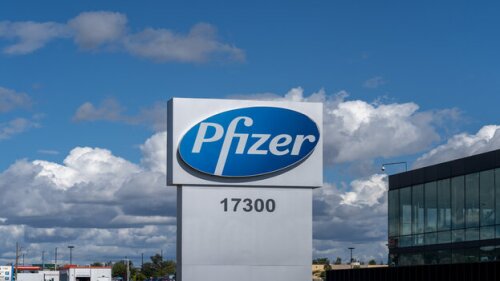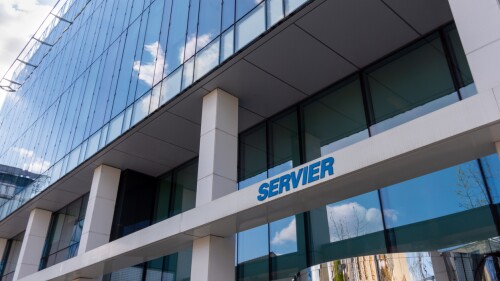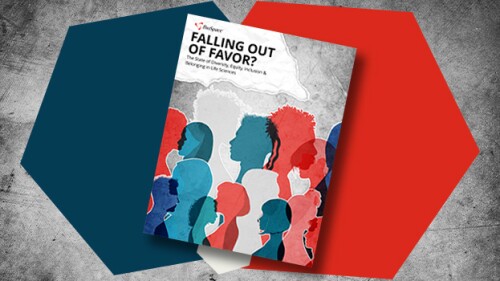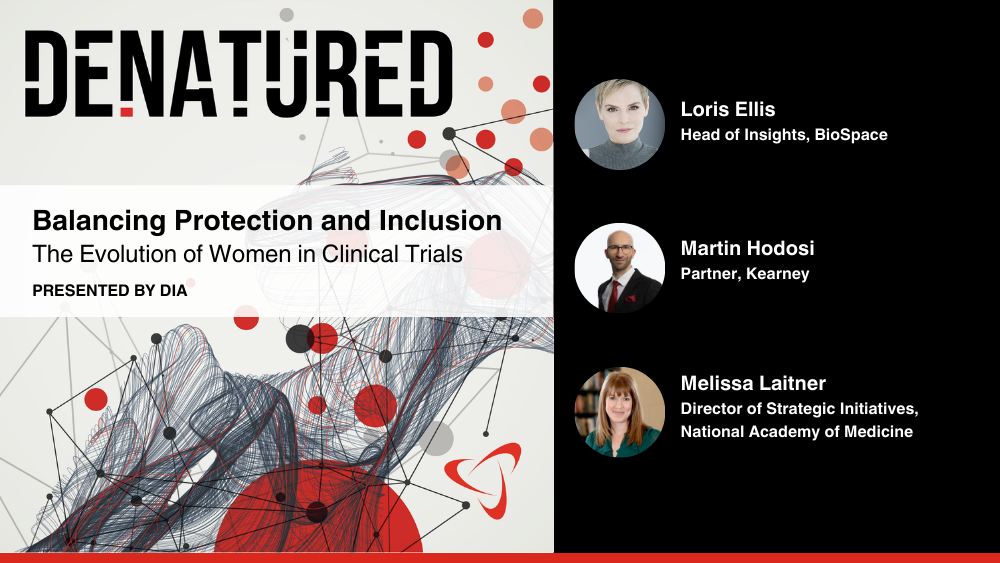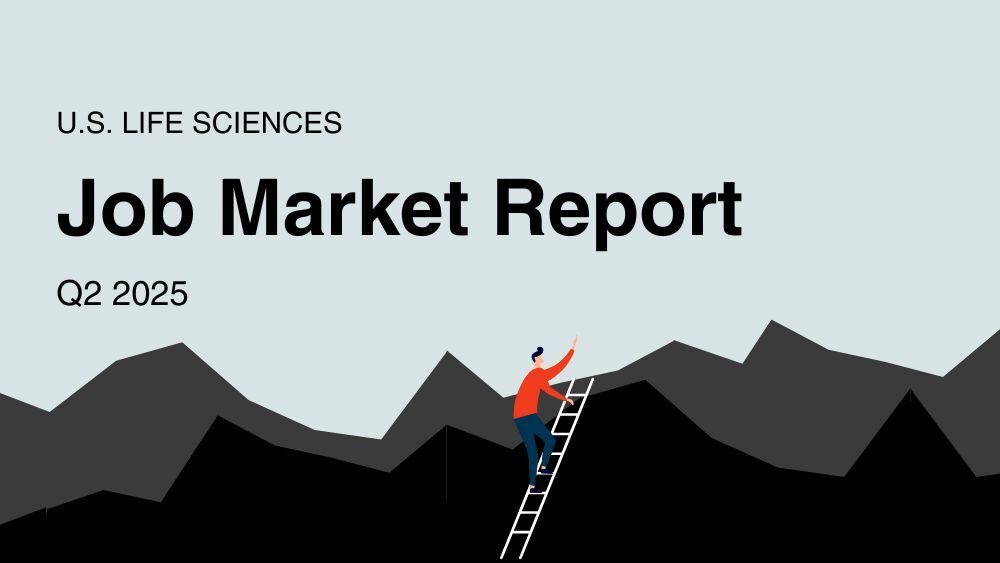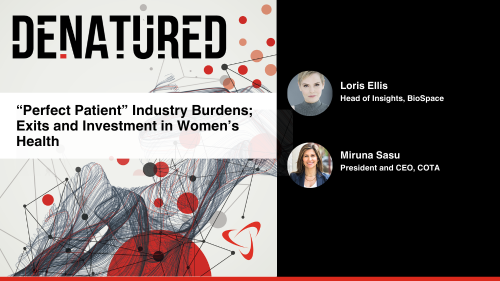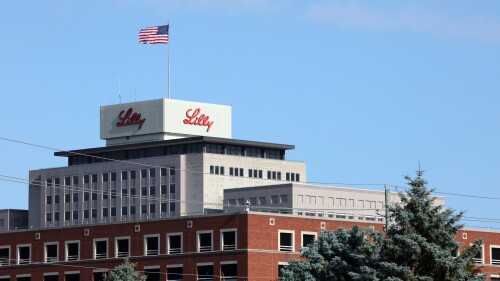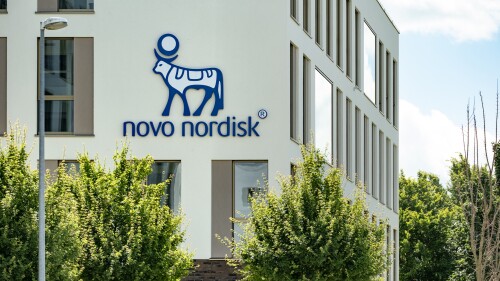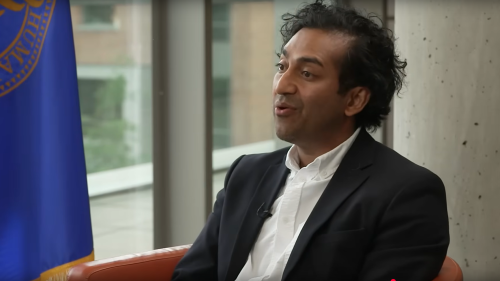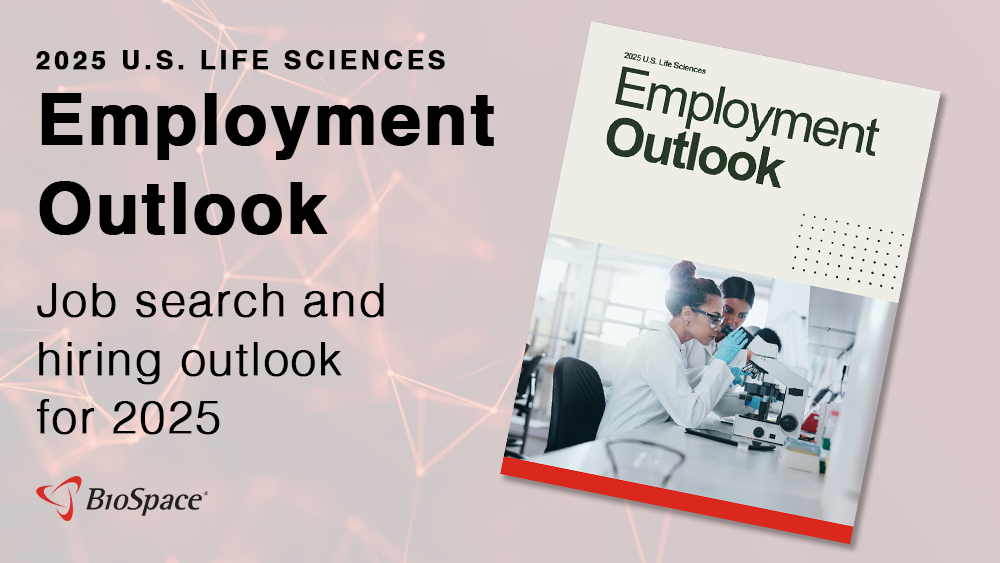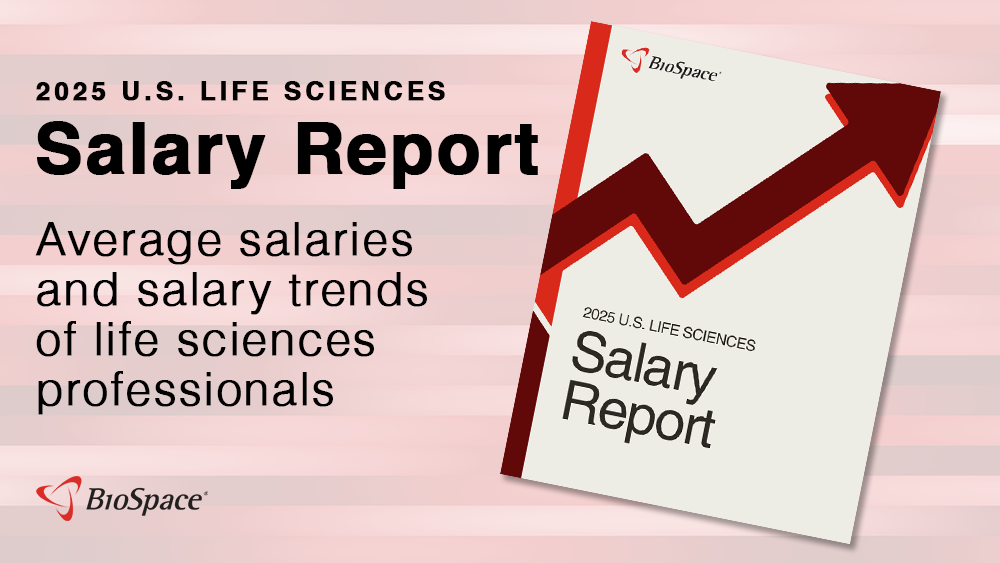Health Secretary Robert F. Kennedy Jr. will appear before the Senate Finance Committee Thursday, ahead of a vaccine advisory committee meeting later in September. Meanwhile, deal-making appetite appears healthy, and the weight loss space continues generating clinical data and other news.
Paul Offit, longtime member of the FDA’s vaccine advisory committee and an outspoken critic of Health Secretary Robert F. Kennedy Jr., was recently informed by the Department of Health and Human Services that his services are no longer required.
Vertex Pharmaceuticals commits $45 million upfront to leverage Enlaza Therapeutics’ War-Lock platform to create drug conjugates and T cell engagers for autoimmune diseases and gentler conditioning for sickle cell/beta thalassemia gene-editing therapy Casgevy.
The French giant is gaining access to darovasertib, a small molecule protein kinase C inhibitor already in Phase II/III trials, with rights for the whole world besides the U.S.
Novartis is licensing ARO-SNCA, a preclinical siRNA therapy for synucleinopathies, a group of neurodegenerative disorders including Parkinson’s disease.
The OMass partnership will boost Roche’s strategy in inflammatory bowel diseases, currently led by afimkibart, an anti-TL1A therapy the pharma obtained from its $7.1 billion acquisition of Telavant in 2023.
FEATURED STORIES
TIGIT-targeting therapies have largely disappointed in recent months, with failed studies, terminated partnerships and shuttered businesses. Here are five biopharma players staying alive with differentiated candidates against the once promising immuno-oncology target.
Slashing adverse drug reactions through pharmacogenetics and advanced AI could help rehabilitate the pharmaceutical industry’s reputation amid mounting criticism.
Analysts believe that Gilead’s new PrEP drug Yeztugo could reach peak sales of $4.5 billion. Not if GSK has anything to say about it.
Why did two private equity firms with more than $460 billion under management want a little old gene therapy biotech called bluebird bio? We wanted to know.
Cell and gene therapy leaders say the agency’s decision to remove the Risk Evaluation and Mitigation Strategies that had been attached to approved CAR T cancer therapies reflects “thoughtful consideration of real-world evidence” and “regulatory trust.”
Big Pharmas like Eli Lilly, Sanofi and Novartis headed back to the dealmakers table multiple times, with 32 total deals counted across the industry for the first half.
LATEST PODCASTS
A consumer-driven weight loss market could put pharma at greater risk if a recession hits; the continued turmoil at FDA and other HHS agencies magnifies the uncertainty facing the industry; Lilly files a lawsuit against a med spa selling its drugs; and more.
Biopharma leaders react to the forced resignation of CBER Head Peter Marks as RFK Jr.’s promised job cuts begin at the FDA; Novo Nordisk presents mixed results from oral semaglutide in cardiovascular disease; the EU’s Committee for Medicinal Products for Human Use declines to recommend Eli Lilly’s Alzheimer’s drug; and pharma R&D returns grew in 2024.
In this episode presented by DIA, BioSpace’s head of insights Lori Ellis discusses the evolution of women’s inclusion in clinical trials with Martin Hodosi, partner at Kearney and Melissa Laitner, director of strategic initiatives at the National Academy of Medicine.
Job Trends
About a month after reporting it’s had a tough time starting enough patients on its treatments, bluebird bio announced it will lay off about 25% of its employees, over half of whom work in R&D.
Subscribe to Genepool
Subscribe to BioSpace’s flagship publication including top headlines, special editions and life sciences’ most important breaking news
SPECIAL EDITIONS
In this deep dive, BioSpace explores the next big thing in obesity.
BioSpace did a deep dive into biopharma female executives who navigated difficult markets to lead their companies to high-value exits.
BioSpace data show biopharma professionals faced increased competition for fewer employment opportunities during the second quarter of 2025, with increased pressure from further layoffs.
DEALS
-
In this episode of Denatured, BioSpace’s Head of Insights Lori Ellis and Miruna Sasu, CEO of COTA, discuss the challenges of inclusion and exclusion criteria of clinical trial patients, and reflect on current investment approaches around women’s health.
-
Roche and Zealand plan to study petrelintide as a monotherapy and in combination with CT-388, a dual agonist of the GLP-1 and GIP receptors that Roche picked up in its recent acquisition of Carmot Therapeutics.
-
Analysts acknowledged the long-term manufacturing deal could dull Viking’s takeout prospects but hailed it as a smart move to ensure supply.
-
While Congress is renewing the priority review voucher program for rare pediatric diseases, the FDA should be required to keep public records of the passes changing hands, too.
-
A new Pitchbook report found $4.3 billion in funding to women-fronted biotech companies across 121 deals. The increase comes as sociopolitical headwinds slam into initiatives to support women and minorities.
WEIGHT LOSS
-
President Donald Trump unwrapped a massive drug pricing policy as CMS prepares for the next round of Medicare drug price negotiations; Vinay Prasad to take the helm at the FDA’s Center for Biologics Evaluation and Research; Bayer cuts 2,000 more employees; Eli Lilly’s Zepbound scores again; and the Galapagos story turns again.
-
In addition to eliciting greater weight loss than Novo Nordisk’s Wegovy, Eli Lilly’s Zepbound does not come at the expense of safety, according to newly released comprehensive tolerability data—findings that Leerink analysts say confirm the GLP-1 drug’s edge in the closely watched market race.
-
Following a similar decision in case the trade group Outsourcing Facilities Association brought against FDA over its decision to declare the end of the shortage of Novo Nordisk’s semaglutide, Judge Mark Pittman agreed that Eli Lilly’s tirzepatide is in sufficient supply, meaning compounding pharmacies can no longer sell the lucrative weight loss drugs.
-
The FDA in February formally declared the end of the semaglutide shortage, which Novo Nordisk expects will help improve the market position of Wegovy. But Eli Lilly’s Zepbound is quickly gaining ground, with sales just $300 million behind Wegovy in Q1.
-
A new executive order aims to smooth the path for getting U.S. manufacturing facilities up and running; HHS says it will require placebo-controlled trials for all vaccine approvals; tariff threats hit BioNTech; Novo Nordisk’s FDA application for an oral version of Wegovy is accepted; and more.
POLICY
-
Under the Inflation Reduction Act, medications with the same active ingredient will be treated as the same drug for price negotiation purposes—even if approved by the FDA under a separate application—disincentivizing companies from investing time and money in gaining approval for new formulations and indications.
-
The FDA’s dramatic summer continues to unfold as news broke late Tuesday evening that Vinay Prasad will depart the agency, where he had been the head of the Center for Biologics Evaluation and Research for less than three months.
-
Six weeks after HHS Secretary RFK Jr. cited unexplained conflicts of interest in dismissing all 17 members of the CDC’s vaccine advisory committee, Democrats are asking for details.
-
While some analysts forecast the tariffs could mean billions in additional industry expenditure, others expect the overall impact to be “manageable.”
-
In a post on X, Health Secretary Robert F. Kennedy Jr. alleged that the Vaccine Injury Compensation Program has “devolved into a morass of inefficiency, favoritism, and outright corruption.”
Four executives with collective decades spent at BMS, Roche, Astellas, Eli Lilly and more gave their insights on navigating a biopharma career during a Monday DIA panel in San Diego.
Interviews can be difficult in any field, but especially in a competitive industry like the life sciences. Read on to discover the best way to answer salary interview questions in our guide.
Plus, what to do if your offer is paused and how to manage work anxiety.
If you overidentify with your job, there are ways to find self-worth outside of work, starting with using your transferable skills somewhere else.
Transitioning from team member to manager has its challenges, including managing ex-peers. There are a few ways you can make the change easier.
Odds are, you won’t love every job. Is that OK? And what should you do if you’re struggling to find happiness at work?
HOTBEDS
IN CASE YOU MISSED IT
New York City has seen increased life sciences employment during the past decade as public funding and key projects like JLABS @ NYC have given the area a boost. A Partnership Fund for New York City executive discusses the city’s strengths and a notable challenge facing businesses.
REPORTS
In this Employment Outlook report, BioSpace explores current workforce sentiment, job activity trends and the prospective job and hiring outlook for 2025, particularly as it compares to the previous year.
BioSpace’s third report on diversity, equity, inclusion and belonging in life sciences examines dramatic shifts in attitude around diversity initiatives.
CANCER
-
Following Merus’ splash last month with a “best-in-disease profile” for its head and neck cancer bispecific, Bicara touted positive results for its monocolonal antibody, but analysts say Merus still has the upper hand.
-
Arguably the most notable of the FDA’s upcoming decisions is that regarding Gilead’s twice-yearly HIV prophylaxis lenacapavir.
-
Here’s how companies can ensure they’re in compliance with new requirements that go into effect in August.
-
The medium-sized biopharma is showing off new results from dordaviprone and Zepzelca, both of which were acquired through Jazz Pharmaceuticals’ dealmaking over the last five years.
-
Despite mixed results, analysts maintained faith in ivonescimab’s ability to cross over between Eastern and Western patient populations.
NEUROSCIENCE
-
The report takes from HHS Secretary Robert F. Kennedy Jr’s playbook, calling out rising autism rates, the vaccine schedule and over medication of children as reasons for chronic diseases.
-
The deal helps revitalize the TREM2 target after the high-profile failure of AbbVie and Alector’s candidate last year.
-
After a tense exchange, Senator Patty Murray (D-WA) told Kennedy that by implementing sweeping cuts to the HHS, he is “enacting his budget,” which “Congress has not passed.”
-
Analysts at BMO Capital Markets said in a weekend note that a non-invasive blood test could help boost uptake of Alzheimer’s disease therapies.
-
The FDA also changed its tune and is now planning to convene an advisory committee to discuss Biohaven’s application.
CELL AND GENE THERAPY
-
As Q1 2025 earnings season continues, tariffs remain top of mind for pharma CEOs and investors. Meanwhile, the American Association for Cancer Research’s annual event kicks off this year’s oncology conference season. Plus, will the FDA become politicized under HHS Secretary RFK Jr.?
-
The condition, recessive dystrophic epidermolysis bullosa, causes chronic wounds and has an 84% mortality rate by age 40.
-
As tariffs, HHS workforce cuts and the ouster of CBER Director Peter Marks threaten the “lifeblood” of the cell and gene therapy space, experts express wariness over the unknowns and optimism that Marks’ legacy will carry on.
-
The cell and gene therapy company is cutting 47 employees and its entire lupus program to focus resources on two CAR Ts. The move follows a reconfiguration last year to move into immunology.
-
Paul Stoffels left his perch as J&J’s chief scientific officer in 2022 to replace Galapagos’ founding CEO Onno van de Stolpe, inheriting a company that had suffered a series of clinical failures since its 1999 creation.



